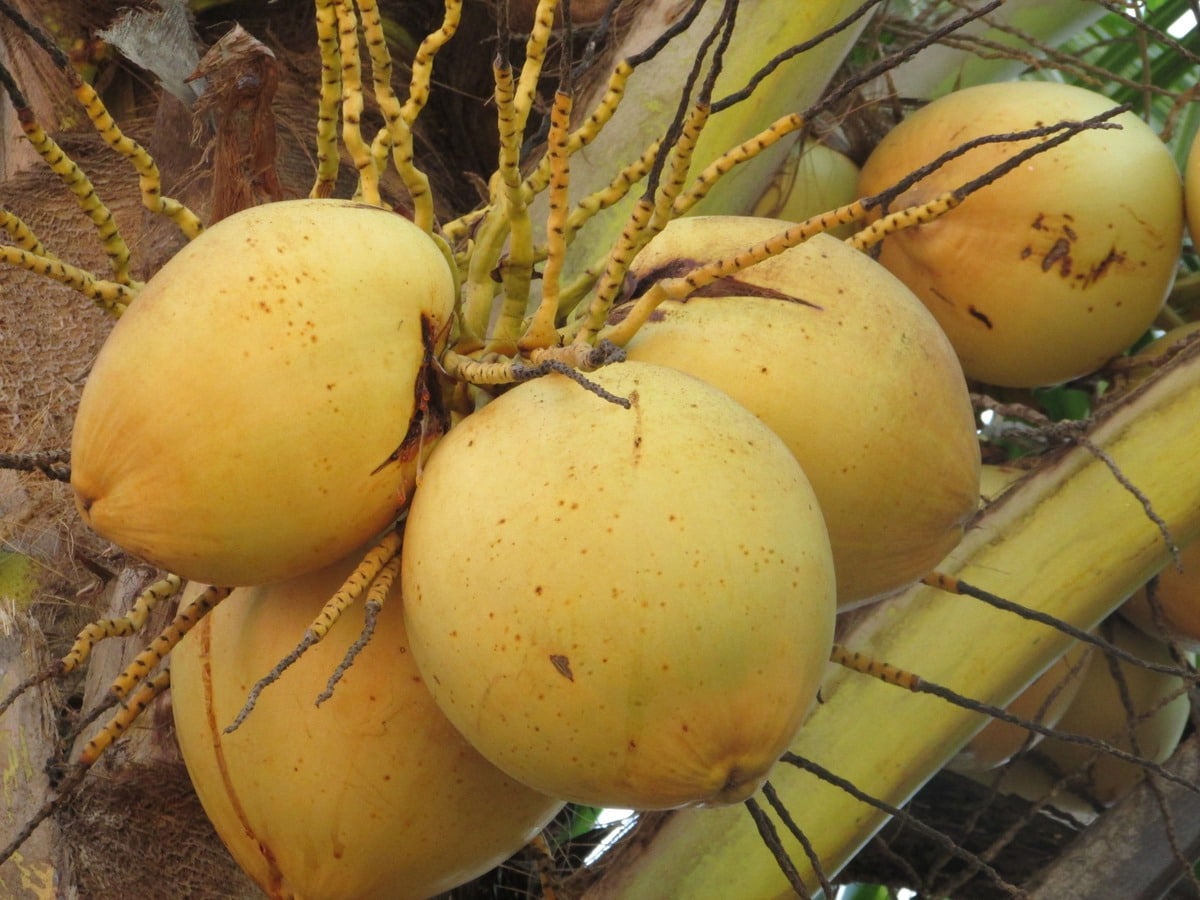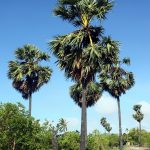
In common or popular language, the term "coconut" is used to refer to a round and edible type of fruit that has a hard shell and is produced by some species of palm trees. But this creates confusion, because really the real bogeyman is that of the Cocos nucifera and of this species there are a few varieties.
So how we like to answer questions, in this article We will tell you about all the types of coconuts that exist, both the true ones and those that are not.
Cocos nucifera, the real coconut tree

The coconut tree o Cocos nucifera It is a typical palm tree of the tropical beaches of both America and Asia. It has a slender trunk about 50 centimeters in diameter at its base and up to 20 meters high. Its leaves are pinnate and are up to 5 meters long. As for the fruit, it has an obovoid shape, measures about 20-30 centimeters and has a fibrous skin. The pulp is whitish and edible.
Varieties
Basically, we can distinguish the typical varieties, and the dwarfs. The former produce many medium-sized coconuts, such as the coconut from the Laccadive Islands in India, or the San Blas coconut in Panama. These are large palm trees, which easily reach 20 meters, and therefore are very interesting to grow in gardens, and not in pots.
As for dwarf coconut trees, we find the »Regia» (red dwarf), »Eburnea» (yellow dwarf), or the »Plume» (green dwarf). Its adult height is much lower, about 6-7 meters at most. These are very early and productive, so it is highly recommended to grow them in orchards or small gardens.
Uses

Coconut pulp is edible, and in fact it is consumed raw or the water is extracted to make drinks. It is also used to make yogurts, cakes, and ice cream. In addition, medicinal properties such as laxatives and diuretics are attributed to it.
Other palm trees with fruits similar to coconuts
Now that we have talked about the real and true coconut tree, it is time to do so about the other species of palm trees that produce fruits that resemble coconuts:
Sea coconut (lodoicea maldivica)
- Image - Wikimedia / scott.zona
- Image - Wikimedia / Ji-Elle
La lodoicea maldivica It is a species of palm native to the Seychelles. Its height is 30 meters, and develops a single thin trunk crowned by large costapalmate leaves. The fruit is a greenish nut with a fibrous shell and contains up to 3 seeds. This is the largest in the world, weighing a maximum of 25 kilos. It does not resist frost.
Jelly Palm (butia capitata)
- Image - Wikimedia / William Avery
- Image - Wikimedia / Moxfyre
- Image - Wikimedia / Abrahami
La jelly palm tree it is endemic to Brazil, although it is cultivated in the tropical and warm temperate regions of the world. Reaches a height of up to 5 meters, and develops a trunk of about 20 to 30 centimeters in diameter. The leaves are pinnate, arched, and up to 170 centimeters in length. The fruit is oblong, with a yellow and fleshy skin, so much so that it can be eaten. This is about 2-3 centimeters in diameter. It resists frosts down to -4ºC.
Palmyra (borassus flabellifer)
- Image - Wikimedia / AntanO
- Image - Wikimedia / Fotokannan
- Image - Wikimedia / Renjusplace
El borassus flabellifer is a palm native to Southeast Asia that reaches a height of up to 30 meters. Its leaves are fan-shaped and about 3 meters wide. As for the fruit, it has a size of 10 to 25 centimeters in diameter. It is composed of a black skin that protects a whitish and edible pulp with a sweet taste. It supports the cold, and it is possible that the adult specimens can tolerate weak frosts (down to -1ºC) if they are sheltered.
Pejibaye (Bactris gasipaes)
- Image - Wikimedia / Dick Culbert
- Image - Wikimedia / Marajonida
- Image - Wikimedia / Michael Hermann
The pejibaye is a tropical palm native to America that reaches 20 meters in height, and develops a solitary trunk about 30 centimeters thick. Its leaves are pinnate, about 3 meters long, and it produces edible fruits called drupes whose size is about 2 centimeters. Although they can be eaten fresh from the plant, they are often eaten with mayonnaise, for example, or made into ice cream. Due to its origin, it does not resist frost.
Salaka (salacca edulis)
- Image - Wikimedia / Suwardi Hagani
- Image - Wikimedia / David J. Stang
The Salaca is a palm tree that is believed to be native to the islands of Java and Sumatra. It has a stem, but it is very short so it usually goes unnoticed. The changing leaves are pinnate and can measure up to 6 meters long., with leaflets up to 2 meters long. In addition, they have 15-centimeter spines. The fruits are rounded, and have a hard but thin skin, white, reddish or dark orange depending on the variety. The pulp is edible, and has a sweet and sour taste. It does not resist frost, but taking into account that it grows in shade it can be very interesting to grow indoors.
Did you know these types of coconuts?














